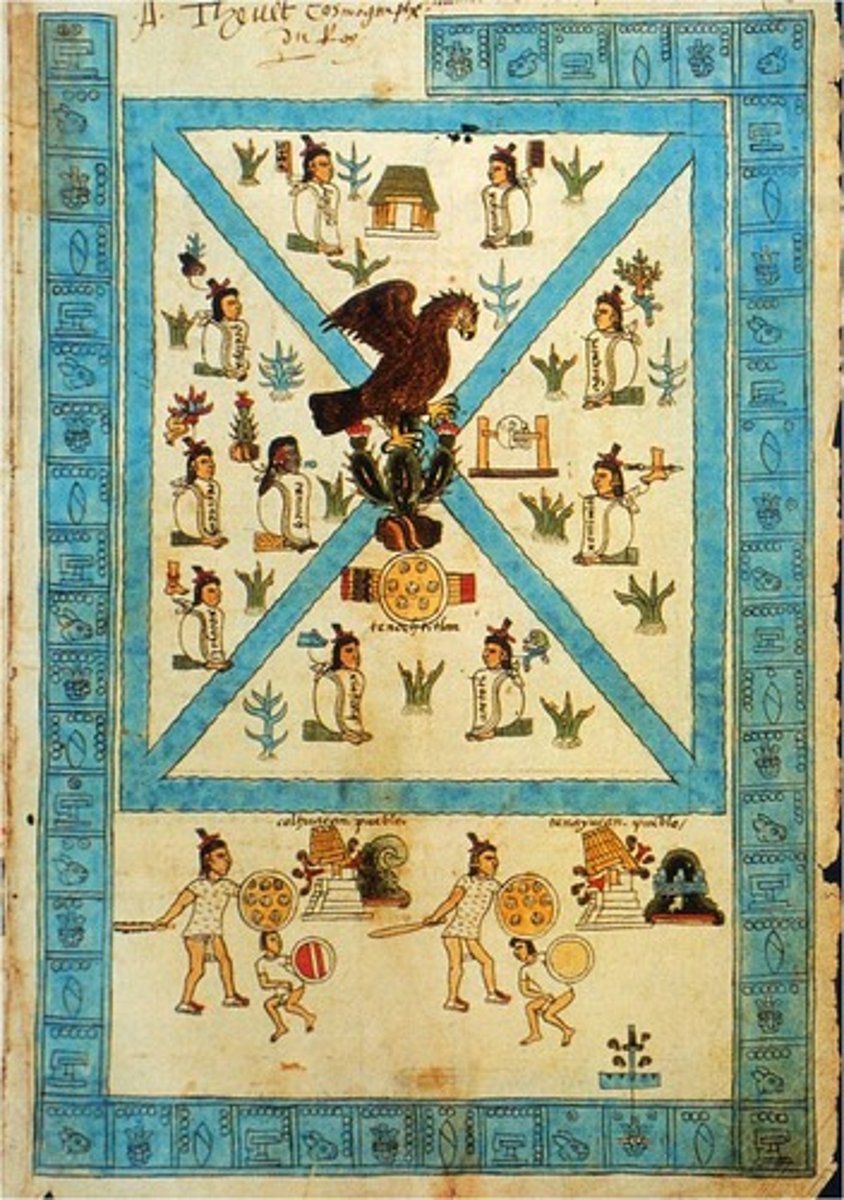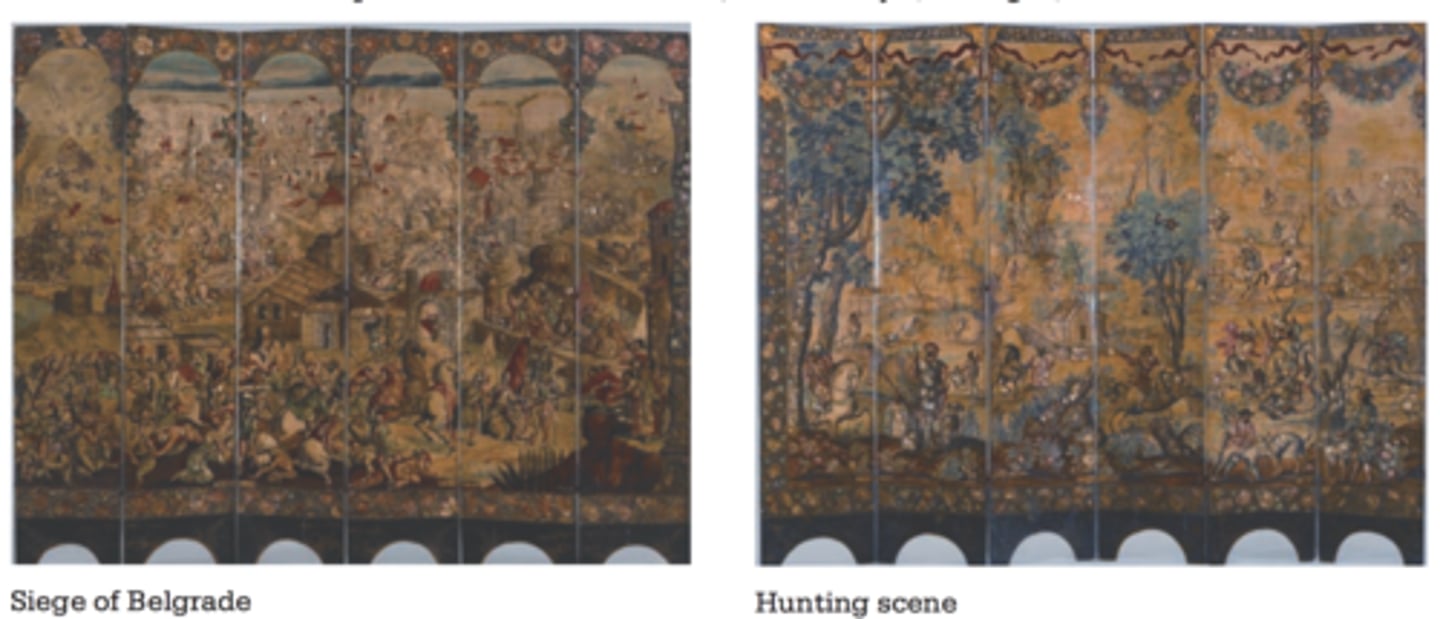Baroque/ spanish colonies
1/10
There's no tags or description
Looks like no tags are added yet.
Name | Mastery | Learn | Test | Matching | Spaced |
|---|
No study sessions yet.
11 Terms
Biombo
a folding screen
Casta paintings
paintings from New Spain showing people of mixed races
Encochados
shell-inlay paintings; tiny fragments of mother-of-pearl placed onto a wooden support and canvas and covered with a yellowish tint and thin glazes of paint
Escudo
the basic monetary unit of Portugal
Mestizo
A person of mixed Spanish and Native American ancestry.
Viceroy
a governor who ruled as a representative of a monarch
Frontispiece of the Codex Mendoza
- Ink and color on paper
- Depicts the founding of Tenochtitlan with an eagle on a cactus (Aztec origin story), a city plan with canals, and scenes of conquest and tribute.
- Created to inform the Spanish Crown about Aztec culture, history, and economy after the conquest.
- Combines indigenous Aztec illustration with Spanish annotations, showing cultural syncretism.
- A rare post-conquest document preserving Aztec worldview, political structure, and city planning through both native and colonial lenses

Circle of the González Family, Screen with the Siege of Belgrade, Screen with a hunting scene
- Tempera and resin on wood, with shell inlay (enconchado)
- A biombo with two distinct scenes — one side shows the Siege of Belgrade (a historical battle, meant for a public/political audience), and the other a serene hunting scene (for a private/domestic audience)
- Displayed in a viceregal palace in New Spain (Mexico), used to divide space and show power, wealth, and cultural knowledge — reflects the tastes of elite colonial society
- Embodies global exchange — blending Mexican craftsmanship, European themes, and Asian forms during the Spanish colonial period in the Americas.

Miguel Gonzgález, Virgin of Guadalupe
- Oil on canvas on wood, inlaid with mother-of-pearl (enconchado)
- Depicts the Virgin of Guadalupe as she appeared to Juan Diego, surrounded by four narrative scenes of her apparition — reflects the story central to Mexican Catholic identity.
- Religious artwork made for devotion, especially among colonial Mexican Catholics; reinforces the Virgin's role as a protector and spiritual symbol of New Spain.
- Fuses Catholic imagery with indigenous traditions; symbolizes the syncretism of Spanish and native beliefs and the growing identity of Creole (Mexican-born Spanish) culture.

Master of Calamarca, Angel with Arquebus, Asiel Timor Die
- Oil on canvas
- Depicts an angel dressed like a Spanish aristocrat holding an arquebus (early firearm) — merges celestial and military imagery, with Latin inscription Asiel Timor Dei ("Asiel, fear of God").
- Reinforces Catholic power and divine authority during colonization — meant to intimidate and inspire conversion among indigenous peoples.
- Reflects religious and cultural syncretism — blends Spanish military, Catholic angelology, and Andean aesthetics in post-conquest South America.

Attributed to Juan Rodriguez, Spaniard and Indian Produce a Mestizo
- Oil on canvas
- A casta painting showing a Spanish father, Indigenous mother, and their mestizo child — part of a series documenting racial mixing in colonial Mexico.
- Created to classify and control racial hierarchy in New Spain; reflects Enlightenment-era interest in taxonomy and social order.
- Visualizes Spanish colonial ideologies of race, purity, and status — reinforces the caste system and colonial power structures.
